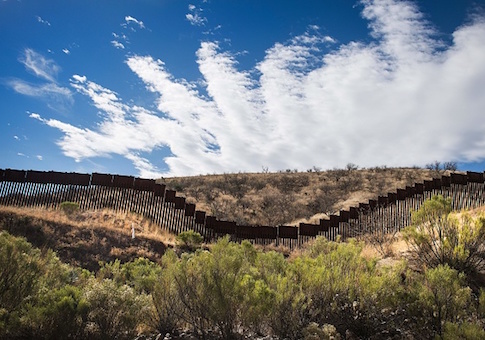The government does not effectively measure its border security programs well and does not know whether costly programs work, according to a new audit.
A review of a more than two-decades-old comprehensive report for how to secure the southwestern border of the United States found that the Department of Homeland Security is still facing challenges in this area.
An audit by the inspector general released this week analyzed a 1993 study by the Sandia National Laboratories, which is operated by the Sandia Corporation, a subsidiary of Lockheed Martin that contracts with the Department of Energy.
The report found that while Customs and Border Protection (CBP) has taken steps towards border security, the agency has mismanagement issues that have undermined its "overall efficiency." In fact, in some areas CBP's performance measurement is "nonexistent."
The inspector general also cited border fencing as the "most significant factor contributing to decreased illegal alien and narcotic smuggling," as multilayer barriers were a major recommendation in the 1993 report.
The audit reviewed measures taken since 2003 and found that Customs and Border Protection "has instituted many border security programs and operations that align" with the Sandia report's recommendations.
"However, our review and analysis of these reports also highlighted some continuing challenges to CBP in its efforts to secure the southwest border," the inspector general said. "In particular, CBP does not measure the effectiveness of its programs and operations well; therefore, it continues to invest in programs and act without the benefit of the feedback needed to help ensure it uses resources wisely and improves border security."
"CBP also faces program management challenges in planning, resource allocation, infrastructure and technology acquisition, and overall efficiency," the inspector general said.
The audit found that the government has "struggled to develop measures of effectiveness" for new border programs and sometimes skews its results.
For example, performance goals are based solely on the number of apprehensions of illegal immigrants and therefore do not effectively show the results of the programs.
The inspector general said CBP also "may sometimes skew its measurements and analyze data to attain the most successful outcome, rather than use best practices for accurate measurement."
CBP's "insufficient or, in some cases, nonexistent performance measurement is a continuing trend," the inspector general said.
The audit documented several prior reports of management flaws, including a 2009 Government Accountability Office report that found the border patrol did not know whether its checkpoints were "operating efficiently or effectively."
Another audit in December 2014 found that the CBP's drone program was expanded, despite the agency not having any measures in place to know if it was effective or improved border security.
A May 2015 report found that a program was not keeping track of an illegal immigrant's "crossing history, re-entry, or re-apprehension over multiple years." Another program had been operating for nine years without border patrol knowing if it worked because it had no performance measures, according to a report from last year.
The inspector general analyzed one key recommendation from the Sandia report: develop multilayer, multibarrier fencing near urban areas. The Sandia recommendation included designs for barriers with a 10-foot-high chain-link fence on the U.S. side, a 15-foot-high curved fence barrier on pavement between the border, and an opaque 10-foot-high wall on the Mexico side.
"According to Sandia, the border fence would discourage illegal entry in the vulnerable, overrun urban areas of San Diego, California and El Paso, Texas," the inspector general said.
Since the study was published, the government has constructed about 350 miles of pedestrian fencing along the 1,635-mile southwestern border. The first projects included urban areas of San Diego, California, and El Paso, Texas.
Border patrol agents in Arizona told the inspector general that border fencing was the most effective tool to reducing illegal immigration.
"Currently on the southwest border, there are about 354 miles of pedestrian fencing, mostly in urban areas in California, Arizona, and Texas," the inspector general said. "In addition to constructing pedestrian fences in urban areas, CBP also erected several miles of fence in the rural areas of the Yuma Sector (Arizona)."
"Yuma Border Patrol Sector Intelligence Unit cites border fencing as the most significant factor contributing to decreased illegal alien and narcotic smuggling in the Yuma area of responsibility," the inspector general said.
In response to the report, DHS said it recognizes the "need for relevant performance measures to verify the effectiveness of our operations and assets."
"CBP will continue to evolve by designing, implementing, and measuring our effectiveness through our efforts to secure the border in light of a dynamic border security threat," the agency said.
The audit noted the evolving threat to the border from terrorist organizations since the Sandia report in the 1990s.
"This new threat, in addition to continued border security challenges of illegal border crossers and drug organizations, make coordination and communication essential," the inspector general said.
"Today, the southwest border is still porous, and questions remain as to whether CBP's significant investments have resulted in better security," the report concluded.
